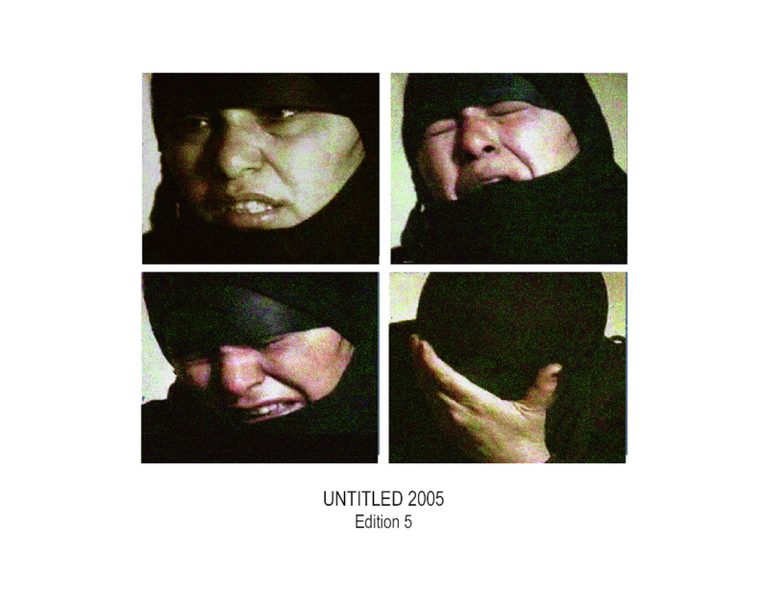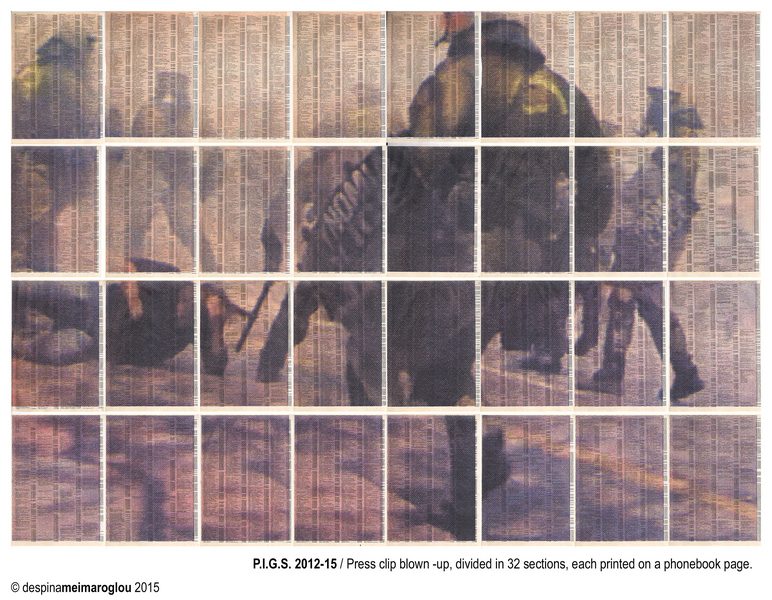INTERVIEW: Despina Meimaroglou
 On the occasion of the group exhibition P.I.G.S. organized by George Davos (16 -21/3/15) in Athens and then abroad, we met the participating artist Despina Meimaroglou, and made a discussion throughout her projects, that Ι spectate φορmore than twenty years because her artwork is more pertinent than ever because affects burning social events, with extensions: sociological, historical and political… through video, photos, video-stills and not only…
On the occasion of the group exhibition P.I.G.S. organized by George Davos (16 -21/3/15) in Athens and then abroad, we met the participating artist Despina Meimaroglou, and made a discussion throughout her projects, that Ι spectate φορmore than twenty years because her artwork is more pertinent than ever because affects burning social events, with extensions: sociological, historical and political… through video, photos, video-stills and not only…
By Efi Michalarou
Photo: Despina’s Meimaroglou Archive
Mrs. Meimaroglou: the issues which concern your work are primarily of socio-political nature, where do you draw from your material?
I believe that the way I process the issues which concern me, have to do primarily with my origins. Born and raised in Egypt in a multicultural environment after the end of the Second World War, followed by my Art studies in England – in the early ‘60s, my persistent involvement with people belonging to different backgrounds and cultures created in me a mixture of traditions and principles, which later influenced my priorities and personal choices both in my life and in my work.
How do you process the information that you collect in order to create the final visual result?
For a number of years I’ve been closely following the daily news, and have created files of clippings and video-shots referring to socio-political issues related to my interests which when re-discovered much later in my drawers seem to have lost their primal meaning and thus end up becoming the ‘background’ on which I install my own veiled reality and tell my own personal stories. Usually my (art) works appear in the form of staged series (in sequence) and that is how I recount my stories…
As we can see your titles appear sarcastic, in fact as an ironic comment on reality; is that an important part of the artwork?
Absolutely! As mentioned at the beginning of this interview, the title plays a key role in my work. I often adopt titles deriving from literature or movies that I’ve been keen of; however they lose their original meaning and end up converting or rather mutate always according to the meaning that I tend to give them.
At the State Museum of Contemporary Art of Thessaloniki, apart from your series of photos, you had created an entire visual environment in order to reveal two adjoining installations (would you care to tell us about it). What is the importance of ‘space’ within your work?
In 2008, I had the occasion to share with the Lithuanian artist Deimantas Narkevicius a very interesting exhibition entitled “Genius Seculi” organized by Dr. Syrago Tsiara the director of the Center of Contemporary Art at the State Museum of Thessaloniki. The exhibition was concerning the estimation of the two participants regarding some very important historical moments that took place during the 20th century. My choice consisted of -in a theatrically staged installation- two stories which continue to challenge me: On the one hand, the shocking images/situations that unfolded before me, in Cambodia during my visit to the capital Phnom Pehn in 2005 of the famous Genocide museum of Tuol Sleng (a former school),
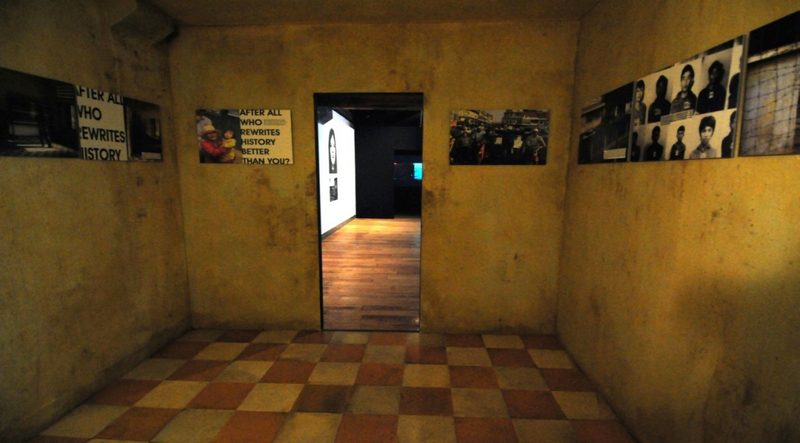
on the other hand, a bloody story with central figure Annette McGavigan a 14 years old schoolgirl, that on September 6, 1971 became the first underage heroic victim, who lost her life under the fire of the English army at the long-suffering city of Derry in Northern Ireland. 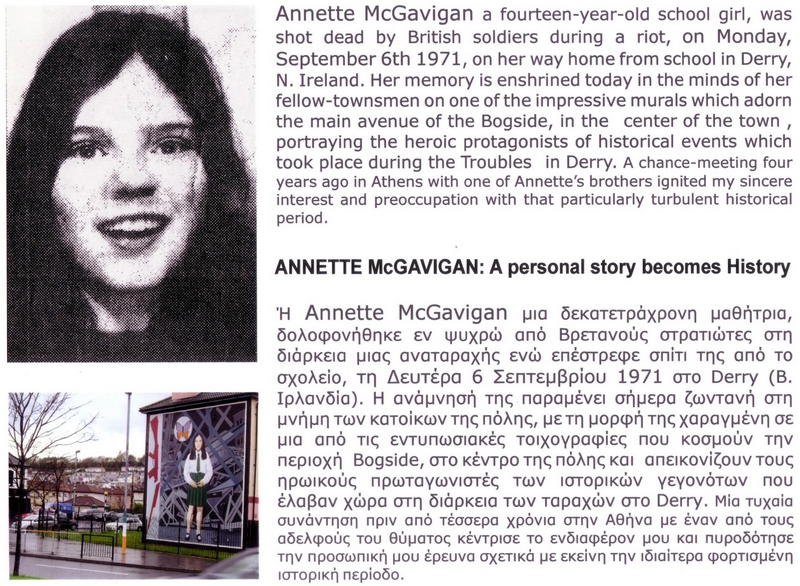 This installation exposed at the building of the Center of Contemporary Art situated at the port of Thessaloniki, consisted of two facing black rooms, sizing 3.5m x 2.5m, symbolizing the two black boxes retrieved from airplane wreckage, which comprise the evidence of the tragic event.
This installation exposed at the building of the Center of Contemporary Art situated at the port of Thessaloniki, consisted of two facing black rooms, sizing 3.5m x 2.5m, symbolizing the two black boxes retrieved from airplane wreckage, which comprise the evidence of the tragic event.
One of your recent projects is connected to the Young Males Detention Center of Avlonas, could you tell us how it emerged and can you describe us your experience?
A PROPOSAL FOR A VOLUNTARY COLLABORATION WITH A GROUP
OF YOUNG MALE PRISONERS
The issues that concern me in particular, which are then processed and end up forming series of anthropocentric-creative-projects usually dirive from socio-political events that are monitored daily in the news, which define and pre-plan the peoples fate. Memory Capsules ( Κάλυκες Mνήμης) is the title I chose for a voluntary creative-workshop that I created (2012-13), involving a small group (up to 8) heterogeneous young people deriving from different backgrounds, confined at that special Juvenile Detention Center. Metaphorically speaking, Memory Capsules I name the human bodies, because by their nature are able to store large amounts of “reference of the past” thus can with a unique ability to bring back to the surface and re-define, and even process familiar memories and facts that remain buried deep in the subconscious. The main objective of this (successful) project was the Revocation of the personal memory of the participants, the restoration of self-esteem, the attempt of reconstitution/recording and re-identification of the personal story of each one of them using the appropriate tool for each case (e.g. painting, drawing, written word), the support of others, the participation and processing of ideas and the exchange of thoughts with the rest of the group and the support of the weaker members of the group. From each one, I tried to retrieve and describe with drawings or words later, a story that was related to: his life, the family that was left behind, a description of his hometown, a desire, a landscape etc. 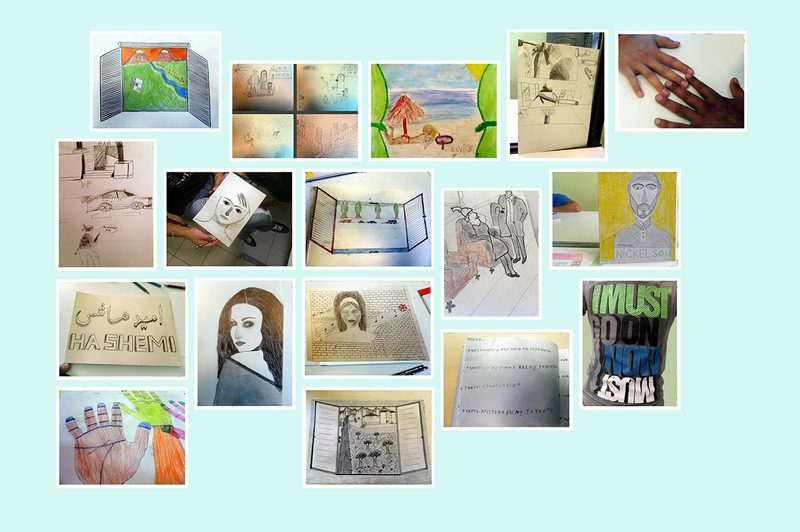 Here, I would like to emphasize that this particular experience, was perhaps the most important that proved worthy to live for in many years…
Here, I would like to emphasize that this particular experience, was perhaps the most important that proved worthy to live for in many years…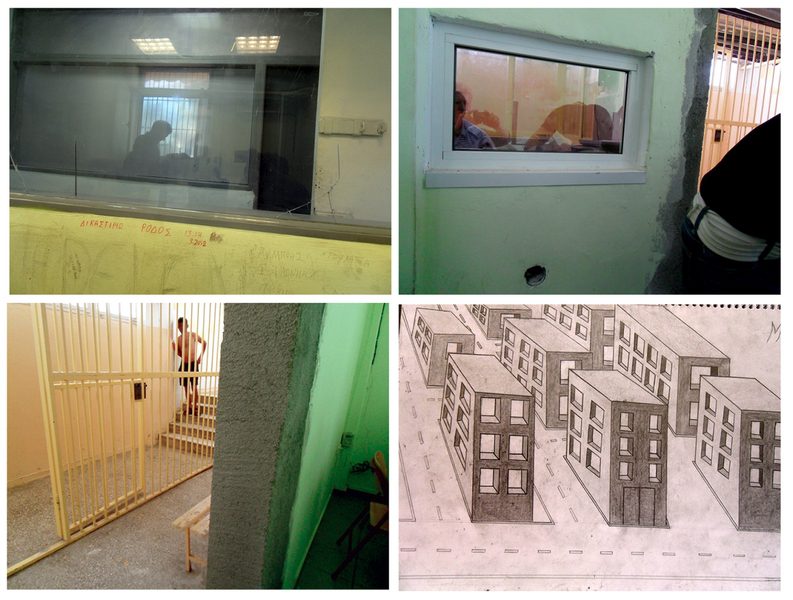
The issues you are dealing with are extremely sensitive and therefore difficult to handle, how do they affect you as a person, what are the limits of art, especially in contemporary art?
Indeed… I remember how much I had been affected in my daily life, when over five years, the walls of my studio had been haunted by countless ‘portraits’ of women who waited for their death penalty in the United States…
For some strange reason, now, (I mean in my case), the borders between my reality and my art practices are beginning to get confused… I mean that my particular response to events that concern me, somehow seem to be entirely normal… Another element that perfectly describes my work and how I process my thoughts, is the great importance I contribute to words and the important space they happen to occupy generally in my work, which I attribute to my long-term in advertising and here I must confess that in this lies the result of the conceptual way with which I treat and manage the meanings -this also portrays my insistence on the important role that the titles occupy in my works… Before I conclude our conversation I would like to explain in a way what drives me to choose the specific materials for the creation/imprint of each image/thought; starting from my love and unceasing presence at the printmaking-cabinet* to the projection of an image on a surface (video projection**). At around the age of four and during a very hot afternoon in Alexandria … I was put to bed by my mother for siesta in a very dark room in an apartment of the 3rd floor … The window’s wooden shutters were still covered with a thick black cardboard that my parents had placed during the ‘blackout time’ of the bombings during WW II… Suddenly the scene that was taking place in the street below with the passersby, the carts covered with vegetables, the passing cars, started to appear projected very clearly, (like a film), penetrating like light dust through a miniscule hole in the cardboard, creating a camera obscura!…a darkroom, projecting on the room’s ceiling the mirror image of the exterior-which is the beginning of the art of photography… Of course, I believe that this fact marked me subconsciously, as I discovered much later, my artistic choices which continue to concern me and I am exploring until today…
Before I conclude our conversation I would like to explain in a way what drives me to choose the specific materials for the creation/imprint of each image/thought; starting from my love and unceasing presence at the printmaking-cabinet* to the projection of an image on a surface (video projection**). At around the age of four and during a very hot afternoon in Alexandria … I was put to bed by my mother for siesta in a very dark room in an apartment of the 3rd floor … The window’s wooden shutters were still covered with a thick black cardboard that my parents had placed during the ‘blackout time’ of the bombings during WW II… Suddenly the scene that was taking place in the street below with the passersby, the carts covered with vegetables, the passing cars, started to appear projected very clearly, (like a film), penetrating like light dust through a miniscule hole in the cardboard, creating a camera obscura!…a darkroom, projecting on the room’s ceiling the mirror image of the exterior-which is the beginning of the art of photography… Of course, I believe that this fact marked me subconsciously, as I discovered much later, my artistic choices which continue to concern me and I am exploring until today…
Apart from the photos and videos we are aware of, you have a series entitled “The Flowers of Evil” referral to the famous Les Fleurs du Mal by Ch. Baudelaire. What initiated those works and their relation to painting?
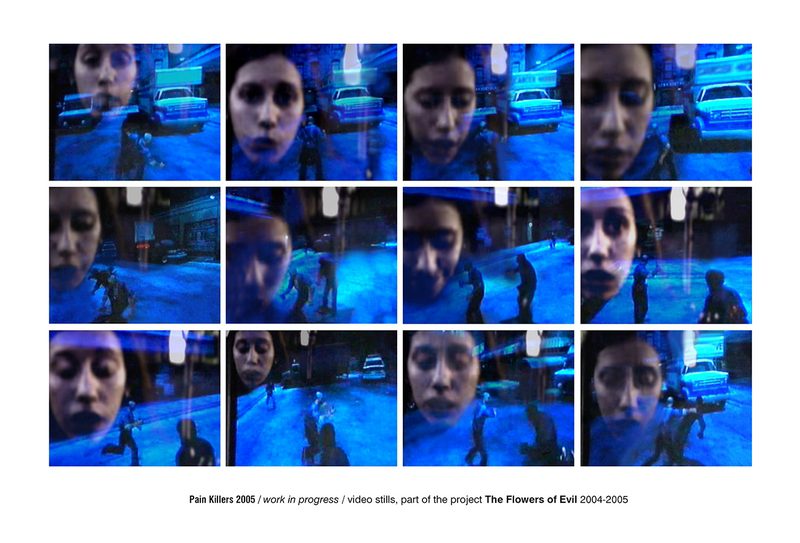
Before answering your above question I keep thinking what an important space in my work is held by the cinematic notion as well as titles which derive from the cinema or from literary books which for some unknown reason are wedged to my memory reappear all of a sudden on the surface in due time as titles to my own series after being converted into a notion which becomes entirely personal. Here I mention the example of my series Les Fleurs du Mal / 2004-2005, (The Flowers of Evil) that refer to the continuing horrific war in Iraq deriving from Ch. Baudelaire’s famous poem. I decided on that title the minute I set eyes on the photos I had just taken of a beautiful bouquet of flowers given to me by a friend on the eve of my trip to the USA, at the beginning of 2003… Due to the angle from which I chose to shoot those particular pictures the flowers looked beautiful, colorful but extremely menacing at the same time…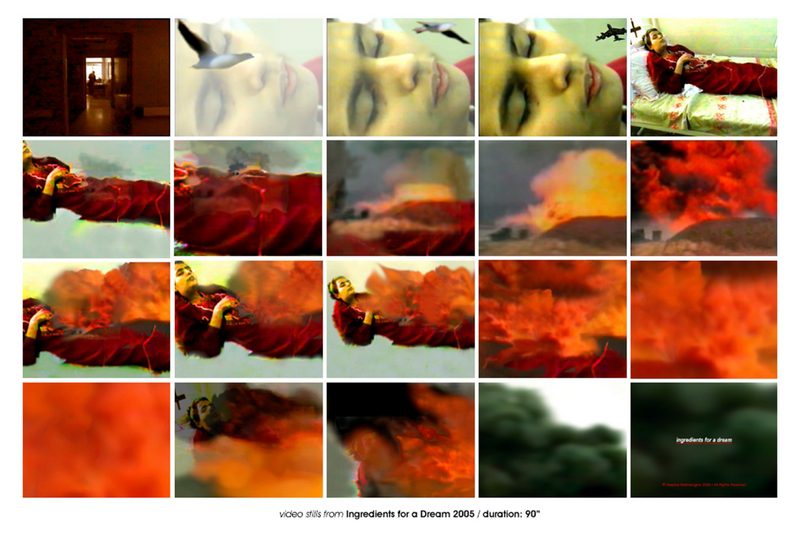
… Suddenly, I was driven to size with the methods used by the media in order to canalize the public opinion… For a number of years my work revolves around the ambiguity of the image and the attempt to reach my ‘Personal Reality’. I strongly believe that ‘reality’ is a very subjective matter… Its perception varies depending entirely on each person’s origin, religion, etc. Art has the power to replace Reality (or at least what we think of it) with Imagination.
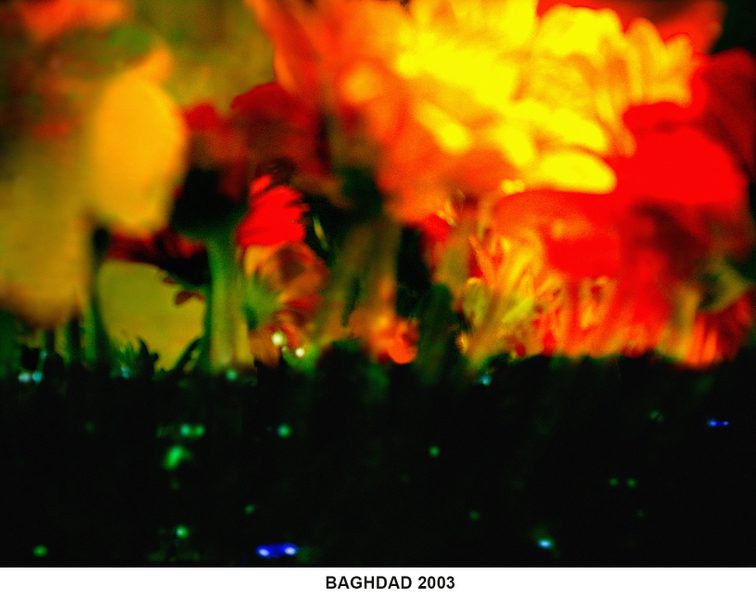 I strongly believe that ‘reality’ is a very subjective matter… Its perception varies depending entirely on each person’s origin, religion, etc.
I strongly believe that ‘reality’ is a very subjective matter… Its perception varies depending entirely on each person’s origin, religion, etc.
Art has the power to replace Reality (or at least what we think of it) with Imagination.
First Publication: www.dreamideamachine.com
© Interview – Efi Michalarou & Dimitris Lempesis
Info: “P.I.G.S.”,Curating: Giorgio Davos, Nosotros, 66 Themistokleous Str., Athens, Duration: 16-21/3/15, www.nosotros.gr

